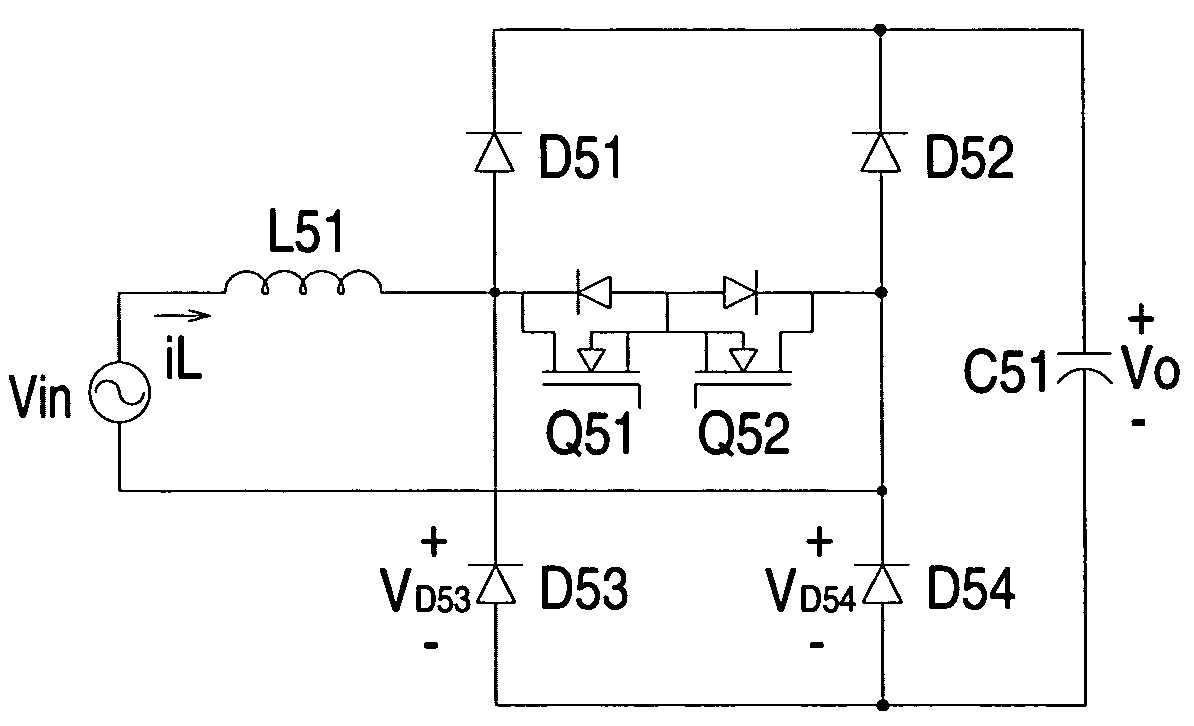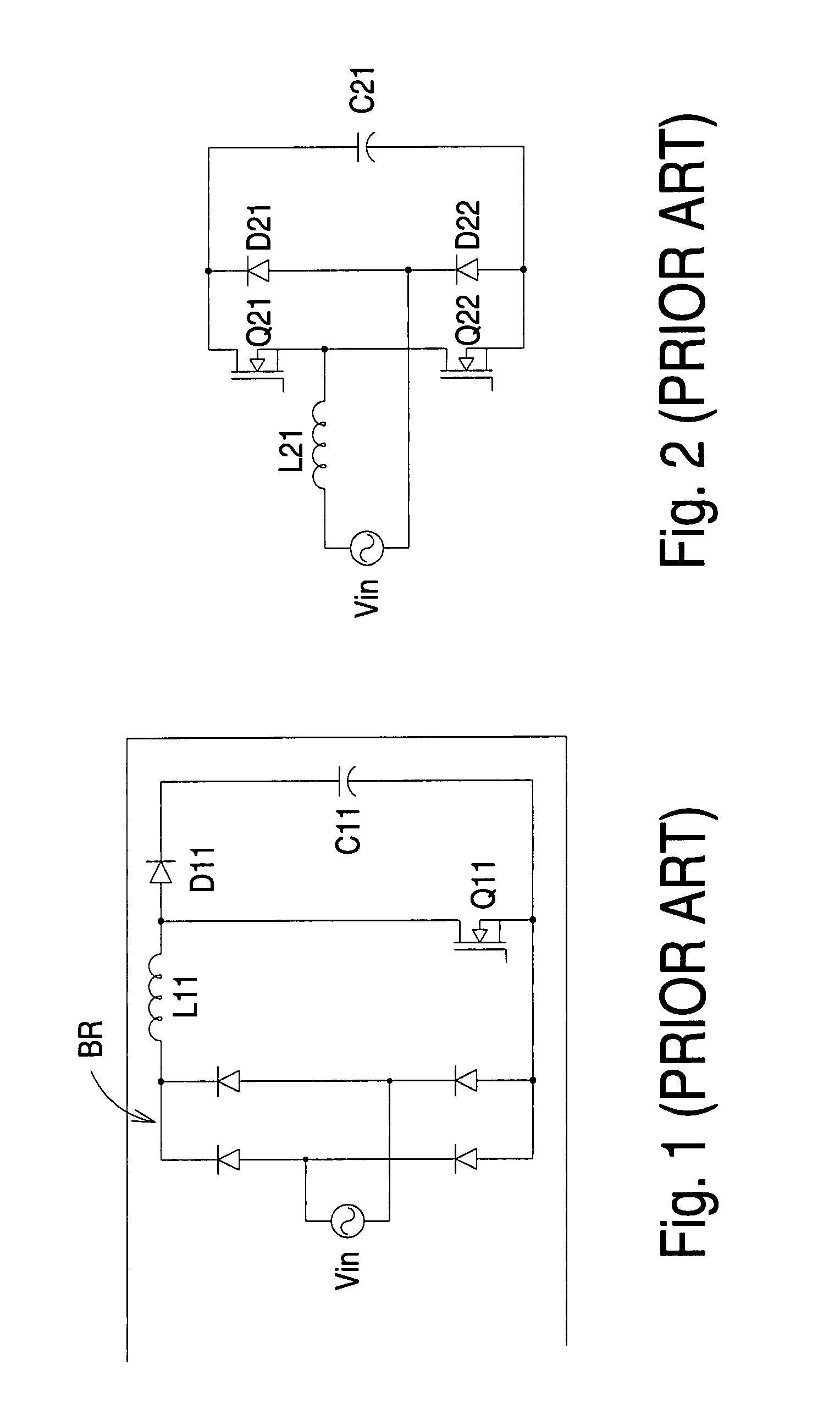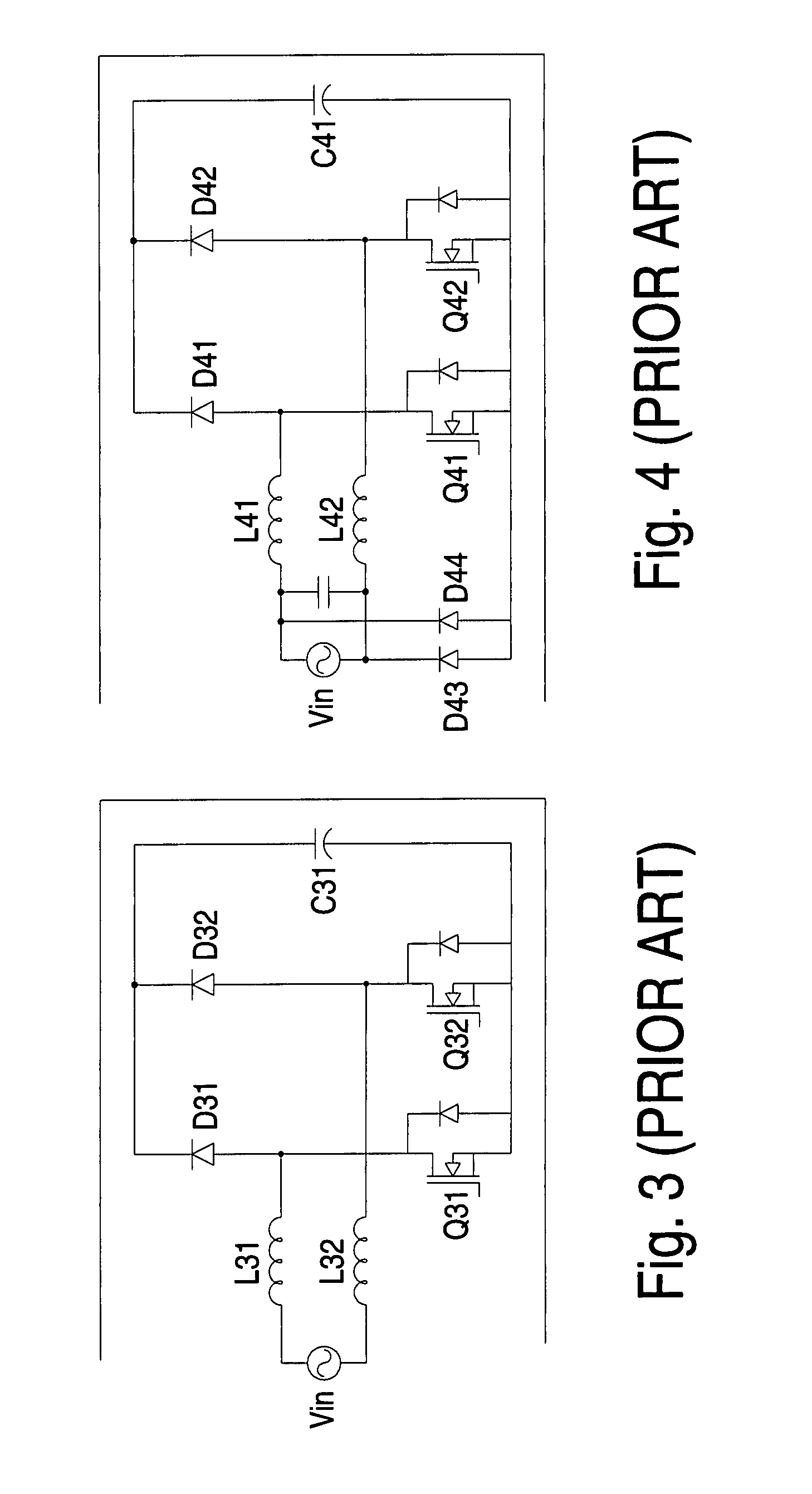Bridgeless PFC converter with low common-mode noise and high power density
a converter and bridgeless technology, applied in the direction of electric variable regulation, process and machine control, instruments, etc., can solve the problems of low conversion efficiency of converters, poor reverse recovery characteristics, and low common-mode noise of converters, so as to reduce common-mode noise and enhance the power density of converters
- Summary
- Abstract
- Description
- Claims
- Application Information
AI Technical Summary
Benefits of technology
Problems solved by technology
Method used
Image
Examples
second embodiment
[0033]FIG. 6 is a circuit diagram of the bridgeless power factor correction converter according to the present invention. The configuration and operation of the boost inductor L61, the bidirectional switch (Q61, Q62), the first series rectifier circuit (D61, D63), the second series rectifier circuit (D62, D64), and the output capacitor C61 are the same with the configuration and operation of the boost inductor L51, the bidirectional switch (Q51, Q52), the first series rectifier circuit (D51, D53), the second series rectifier circuit (D52, D54), and the output capacitor C51 of FIG. 5, and it is not intended to give details herein. Compared with FIG. 5, the converter of FIG. 6 adds a pair of auxiliary switches (S61, S62) which are connected in parallel with the second series rectifier circuit (D62, D64) and configured to switch in synchronization with the frequency of the input AC voltage Vin and thereby suppressing the common-mode noise of the converter with better efficiency.
third embodiment
[0034]FIG. 7 is a circuit diagram of the bridgeless power factor correction converter according to the present invention. The configuration and operation of the boost inductor L71, the bidirectional switch (Q71, Q72), the first series rectifier circuit (D71, D73), the second series rectifier circuit (D72, D74), and the output capacitor C71 are the same with the configuration and operation of the boost inductor L51, the bidirectional switch (Q51, Q52), the first series rectifier circuit (D51, D53), the second series rectifier circuit (D52, D54), and the output capacitor C51 of FIG. 5, and it is not intended to give details herein. Compared with FIG. 5, the converter of FIG. 7 adds a pair of auxiliary capacitors (C72, C73) which are connected in parallel with the second series rectifier circuit (D72, D74) and configured to further suppress the common-mode noise by its low-impedance characteristics at high frequencies. Alternatively, with the equivalent characteristic of the capacitor ...
fourth embodiment
[0035]FIG. 8 is a circuit diagram of the bridgeless power factor correction converter according to the present invention. The bridgeless power factor correction converter of FIG. 8 is an interleaved power converter circuit, in which a first boost inductor L81, a first bidirectional switch (Q81, Q82), a first series rectifier circuit (D81, D82), and a second series rectifier circuit (D83, D84) form a first power converter stage having the same topology with the bridgeless power factor correction converter of FIG. 5, and a second first boost inductor L82, a second bidirectional switch (Q83, Q84), a third series rectifier circuit (D85, D86), and the second series rectifier circuit (D83, D84) form a second power converter stage having the same topology with the bridgeless power factor correction converter of FIG. 5. The bridgeless power factor correction converter of FIG. 8 is derived by interleaving a bridgeless power factor correction converter of FIG. 5 with another bridgeless power ...
PUM
 Login to View More
Login to View More Abstract
Description
Claims
Application Information
 Login to View More
Login to View More - R&D
- Intellectual Property
- Life Sciences
- Materials
- Tech Scout
- Unparalleled Data Quality
- Higher Quality Content
- 60% Fewer Hallucinations
Browse by: Latest US Patents, China's latest patents, Technical Efficacy Thesaurus, Application Domain, Technology Topic, Popular Technical Reports.
© 2025 PatSnap. All rights reserved.Legal|Privacy policy|Modern Slavery Act Transparency Statement|Sitemap|About US| Contact US: help@patsnap.com



